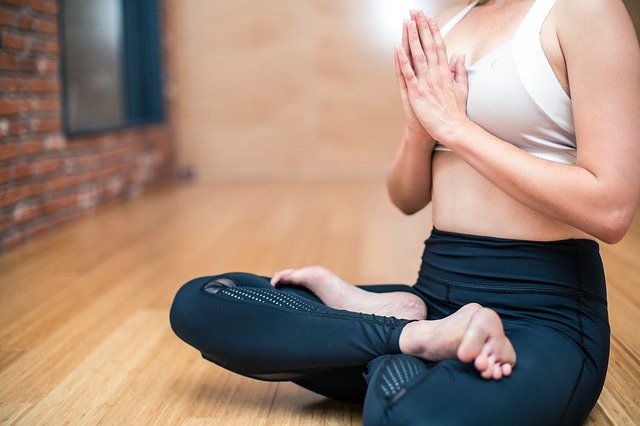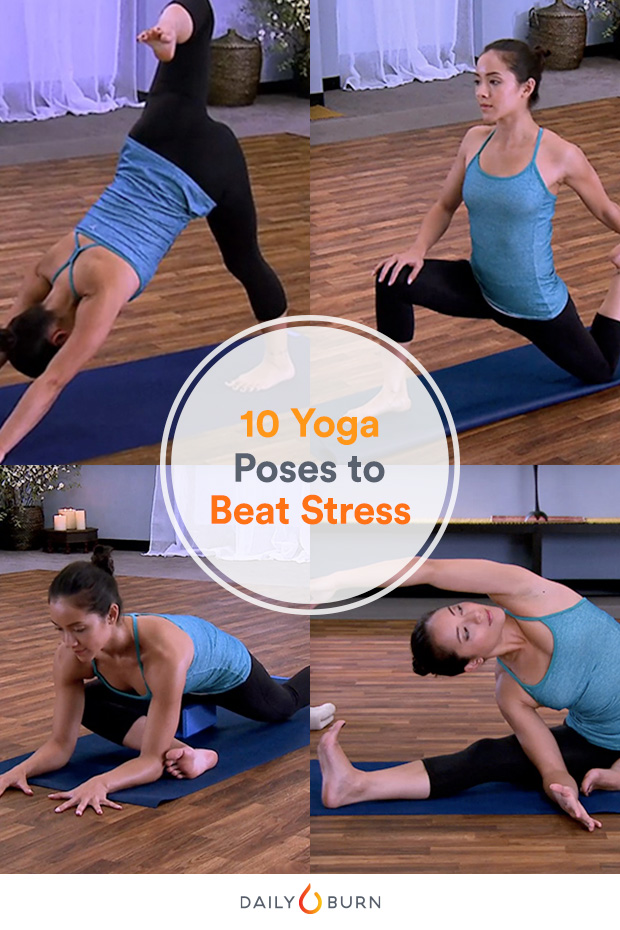
One easy breathing exercise to relieve anxiety is the seashell breathe. It provides internal warmth as well as transporting you to the sea. Lewis Howes, author of School of Greatness, teaches the technique. He urges viewers to take deep, slow breaths from the bottom of their belly. You can perform the technique sitting, standing, or lying down. Start by wearing loose clothing. Place your arms on the arms and legs of your chair to sit or lie down.
You can start practicing this technique anytime during the day. This breathing technique engages your sympathetic nervous, which controls your body’s fight-or flight response. Your body will be relaxed and you can also affect your mind. Your parasympathetic nervous systems is responsible for balancing your two systems. You can increase stress levels by breathing too deeply. Your body will produce more adrenaline which causes you to be more anxious.

Another simple breathing exercise that helps with anxiety is the pursed -lip technique. It's a simple practice that anyone can do anywhere. You can do it in a matter of minutes and without any help. This breathing exercise can help you gain control of your emotions, and reduce anxiety. There are many methods to do this breathing exercise. Some are more effective than some.
A popular breathing exercise for anxiety is the dirga swasam pranayama. It focuses on the upper chest, diaphragm, and abdomen. You should be comfortable, and you can either sit or lie down to perform this exercise. To perform this exercise, you should close your mouth and breathe deeply. You should pay attention to your breathing while you do this. Feel fullness in your lungs. This will calm your mind and help alleviate anxiety.
Breathing exercises to alleviate anxiety are a good way to reduce your negative thoughts. For those with anxiety, a particular type of breathing exercise is recommended. This is a simple and quick exercise that takes only a few minutes. Once you've been doing it for a few more days, you'll be amazed by the results. It will help you feel better and be able to handle any situation with less anxiety.

Breathing exercises to reduce anxiety can be done wherever, whenever, and however anxious you are. You should do them in quiet surroundings. You'll feel less anxious if you are feeling anxious. It will help you focus on your goals and be more focused on the present. Regular practice of these exercises will make you more focused. And you'll be surprised by how much easier it will be when you've done them for years.
FAQ
What can you do for your immune system to improve?
The human body is made up of trillions and trillions of cells. These cells work together to form organs and tissues that perform specific functions. If one cell dies, a new cell takes its place. Hormones, which are chemical signals that allow cells to communicate with one another, enable them to do so. Hormones control all bodily functions, including growth, development, metabolism, immunity and immune system.
Hormones are chemical substances that glands secrete throughout the body. They travel through bloodstreams and act as messengers that control the function of our bodies. Some hormones are produced within the body while others are externally manufactured.
Hormone production occurs when hormone-producing cells release their contents into your bloodstream. Once hormones have been released, they travel through the body until reaching their target organ. Some hormones may only remain active for a limited time. Others hormones are more active and have a longer life expectancy. They can still influence the body's functions long after they are eliminated from the bloodstream.
Some hormones can be produced in large amounts. Others are produced in small amounts.
Some hormones only are produced during certain periods of life. For example, estrogen is made during puberty. Estrogen helps women develop breasts, maintain bone density, and prevent osteoporosis. It also promotes hair growth and keeps skin smooth and soft.
Does being cold give you a weak immune system?
Being cold gives you a weaker immune system because when you are cold, your body produces less white blood cells which fight infections. Cold can also make you feel better as your body releases endorphins to your brain, which reduce pain.
What's the problem with BMI?
BMI stands For Body Mass Index. This refers to the measurement of body fat using height and weight. This formula calculates BMI.
Divide the weight in kilograms by the height in meters squared.
The result is expressed using a number from 0 through 25. A score greater than 18.5 is considered overweight. A score greater than 23 is considered obese.
A person who weighs 100 kg and has a height of 1.75 m will have a BMI of 22.
What is the difference between a virus and a bacterium?
A virus is a microscopic organism that cannot reproduce outside its host cell. A bacterium is an organism that splits itself in two. Viruses are very small (about 20 nanometers) while bacteria are larger (up to 1 micron).
Viruses spread easily through contact with infected bodily tissues, such as saliva and urine, semen, vaginal secretions or pus. Bacteria are usually spread through direct contact with contaminated objects or surfaces.
Viral infections can be transmitted through skin cuts, scrapes and bites. They can also be transmitted through the eyes, nose, mouth, ears, rectum, and anus.
Bacteria can get into our bodies through cuts, scrapes and burns, insect bites, or other skin breaks. They can also get into our bodies via food, water or soil.
Both viruses and bacteria can cause illness. But viruses can't multiply within their hosts. Viral infections can only cause diseases in living cells.
Bacteria may spread to other people and cause sickness. They can even invade other parts of the body. To kill them, we must use antibiotics.
What are the 10 most delicious foods?
These are the 10 best foods to try:
-
Avocados
-
Berries
-
Broccoli
-
Cauliflower
-
Eggs
-
Fish
-
Grains
-
Nuts
-
Oats
-
Salmon
What is the difference between calories and kilocalories in food?
Calories are units that measure how much food has energy. A calorie is a unit of measure. One calorie is equal to one degree Celsius in energy.
Kilocalories are another way to describe calories. Kilocalories can be measured in thousandsths of one calorie. 1000 calories is one kilocalorie.
These are the 7 secrets to a healthy life.
-
Be healthy
-
Exercise regularly
-
Rest well
-
Drink lots of water
-
Get enough sleep
-
Be happy
-
Smile often
Statistics
- WHO recommends reducing saturated fats to less than 10% of total energy intake; reducing trans-fats to less than 1% of total energy intake; and replacing both saturated fats and trans-fats to unsaturated fats. (who.int)
- According to the Physical Activity Guidelines for Americans, we should strive for at least 150 minutes of moderate intensity activity each week (54Trusted Source Smoking, harmful use of drugs, and alcohol abuse can all seriously negatively affect your health. (healthline.com)
- nutrients.[17]X Research sourceWhole grains to try include: 100% whole wheat pasta and bread, brown rice, whole grain oats, farro, millet, quinoa, and barley. (wikihow.com)
- In both adults and children, the intake of free sugars should be reduced to less than 10% of total energy intake. (who.int)
External Links
How To
What does "vitamin" actually mean?
Vitamins can be described as organic compounds found in food. Vitamins aid us in absorbing nutrients from the food we eat. Vitamins cannot be produced by the body. They must be acquired from food.
There are two types if vitamins: water soluble, and fat soluble. Water-soluble vitamins dissolve in water easily. These include vitamin C (thiamine), Vitamin B1 (riboflavin), Vitamin B2 (riboflavin), Vitamin B3 (niacin), Vitamin B6 (pyridoxine), Vitamin C, B1 (thiamine), Vitamin B2 (riboflavin), Vitamin B3 (niacin), and Vitamin B6 (pyridoxine). Fat soluble vitamins are stored in the liver and fatty tissue. Some examples include vitamin D and E, K, A and beta carotene.
Vitamins are classified according their biological activity. There are eight major categories of vitamins.
-
A - Vital for normal growth and maintaining good health.
-
C is important for nerve function and energy production.
-
D - necessary for healthy bones and teeth.
-
E is needed for good reproduction and vision.
-
K - Essential for healthy muscles and nerves.
-
P - Essential for strong bones and teeth.
-
Q - Aids in digestion and absorption.
-
R – Required for the formation of red blood vessels.
The recommended daily intake (RDA), of vitamins varies with age, gender and physical condition. The U.S. Food and Drug Administration sets RDA values.
For adults over 19 years, the RDA is 400 mg per day for vitamin A. However, pregnant women need 600 micrograms per day because it is important for fetal development. Children ages 1-8 require 900 micrograms per day. Infants below one year old require 700mg per day. But, between 9 months to 12 months, the amount drops to 500mg per day.
Children aged between 1-18 years require 800 micrograms of sugar per day, while overweight children need 1000 micrograms. Children who are underweight receive 1200 micrograms every day to meet their nutritional requirements.
Children between 4 and 8 years old with anemia will need 2200 micrograms daily of vitamin C.
2000 micrograms daily is required for adults over 50 to maintain their general health. Breastfeeding or pregnant women require 3000 micrograms per daily due to higher nutrient demands.
1500 micrograms is the recommended daily intake for adults aged 70+, who lose approximately 10% of muscle each year.
Women who are pregnant and lactating need more nutrients than the RDA. Pregnant woman need 4000 micrograms daily in pregnancy, and 2500 per day after childbirth. Breastfeeding mothers need to consume 5000 micrograms every day when breastmilk has been produced.